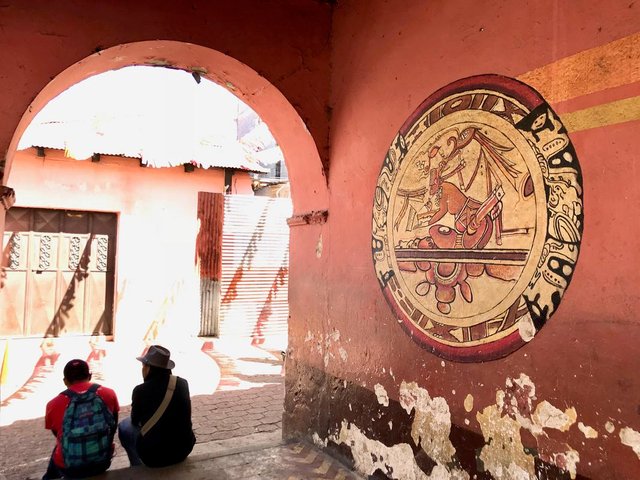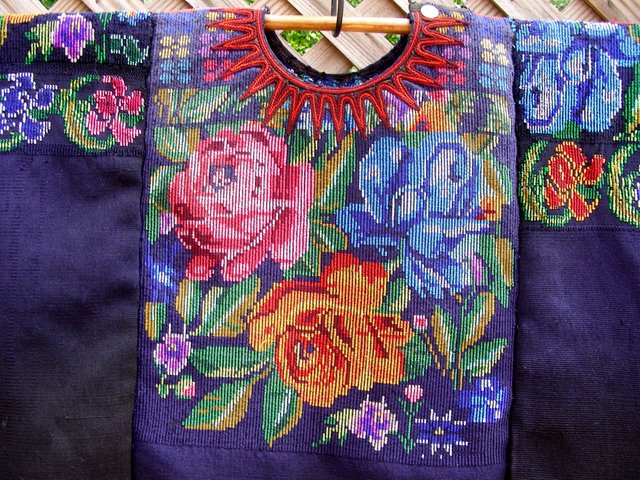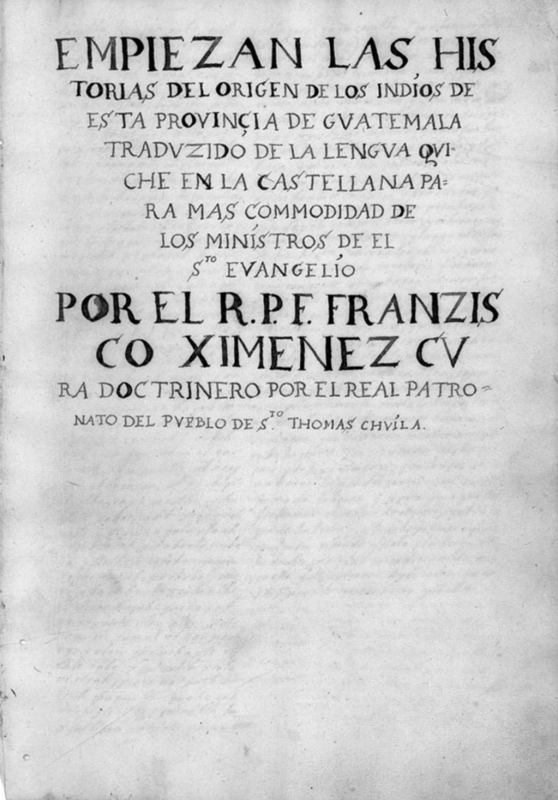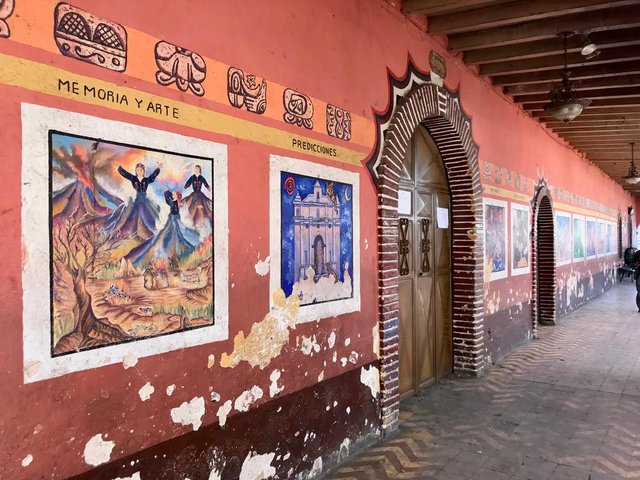K'iche' Maya Past and Present: Streets of Chichicastenango

Town Hall, Chichicastenango, Guatemala
Hello Steemers
I recently visited Chichicastenango, a K’iche’ Maya town nestled in the southwestern mountains of Guatemala. Known for its bustling markets and rich Mayan traditions, Chichicastenago offers visitors a glimpse of the Mayan worldview, past and present.
Chichicastenago, Chichi for short, wears its history on its streets. Let’s take a walk!
Market Days

Chichi Market, Chichicastenango, Guatemala
To the outside world, Chichi is probably best known for its massive market days, held every Thursday and Sunday. Here, you can find many different artisanal goods, food, candles, copal and pom (traditional incense), machetes… the whole gamut! You can also find a good steal on second-hand huipils, the traditional hand-woven blouses Mayan women wear.
A local told me that if you want to get an extra bargain at the market, it is best to go in the late afternoon when the market is closing. Vendors are more likely to negotiate at the end of the day, after the crowds have left. That being said, the relative USD cost of secondhand huipils is massively undervalued, considering weavers typically spend six weeks to three months to make just one blouse!
The common designs you will find on the huipils have been passed down for centuries and are unique to each town. The huipils of Chichi commonly have a woven rose pattern on front. The traditional collar is also distinguished, forming a sunburst-like shape that rests on the collarbone.

Traditional K’iche’ Huipil (1) Tomchak, L. Huipils.
K’iche’ Maya Tradition, Then and Now
Stay for more than a day in Chichi and you will find that the town has much more history and mystery to offer besides the market. Chichicastenago was the birthing place of the Popol Vuh, a sacred K’iche’ Mayan text that recounts the creation, mythology and history of the K’iche’ people.
For centuries, the Popol Vuh was preserved through oral tradition (2), until 1500 when it was first written down.(3) Later in the 18th century, a Spanish, Dominican friar, Francisco Ximénez living in the K’iche’ territory transcribed and translated the text to Spanish.(4) The manuscripts quickly fell into the darkness and remained obscured for more than two centuries, quietly trading hands among libraries, archivists, and personal collectors.(5) It wasn’t until the 1940’s that the Popol Vuh was re-discovered and made available for mass publishing.(6)

Ximénez’s Manuscript of the Popol Vuh (7) Popol Vuh. In Wikipedia, The Free Encyclopedia.
Despite Spanish colonialism and state-sponsored genocide, the K’iche people still embrace pre-christian beliefs and customs, incorporating aspects of ancient Mayan tradition with Catholicism. The confluence of Mayan and Catholic belief systems is most notable in and around the church of Santo Tomás.
The steps of the church are black with copal resin, an incense used in Mayan offerings. Outside the church you will find indigenous prayer leaders, called chuchkajaues (mother-fathers) who carry censers and chant magical words to honor the ancestors and the ancient Mayan calendar.

Town Hall, Chichicastenango, Guatemala
Walk to the east side of the central plaza and you will find this mural, spanning the wall on Chichi’s town hall. The mural is dedicated to the victims of the civil war and recounts the story of the civil war using symbology from the Popul Vuh.

Arco de Gucumatz
North of the town center is the Gucumatz arch, opening to the Valley of Chichicastenango. This arch serves as reference point for Chichicastenago and represents the Mayan god, Gucamatz, who is the creator of waters and earth according to the Popol Vuh.

Cementerio de Chichicastenango, Chichicastenango, Guatemala
Two blocks east of town center sits the town cemetery, marked with bright family mausoleums. Take a walk among the tombs and you may find locals conducting fire offerings on behalf of sick family members, or to honor ancestors. I had the chance to participate in a fire offering with a family, praying for the health of their youngest son. It was incredibly impactful.
Thinking Chichi is in your future? Need recommendations on food, accommodation and transportation? Comment below :)
Happy Travels!
Brooke
References
(1) Tomchak, L. Huipils [Pinterest Post]. Retrieved February 10, 2018.
(2)"Popol Vuh AHA". www.historians.org. American Historical Association. Retrieved February 10, 2018.
(3) "Popol Vuh - The Sacred Book of The Mayas". www.vopus.org. VOPUS. Retrieved February 10, 2018.
(4)"Popol Vuh AHA". www.historians.org. American Historical Association. Retrieved February 10, 2018.
(5) Popol Vuh. (2018, February 1). In Wikipedia, The Free Encyclopedia. Retrieved 21:58, February 10, 2018, from https://en.wikipedia.org/w/index.php?title=Popol_Vuh&oldid=823511841
(6)Popol Vuh. (2018, February 1). In Wikipedia, The Free Encyclopedia. Retrieved 21:58, February 10, 2018, from https://en.wikipedia.org/w/index.php?title=Popol_Vuh&oldid=823511841
(7) Popol Vuh. (2018, February 1). In Wikipedia, The Free Encyclopedia. Retrieved 21:58, February 10, 2018, from https://en.wikipedia.org/w/index.php?title=Popol_Vuh&oldid=823511841
I love the colour schemes in the architecture - really gives the place a vibrant feel!
@sroka87 me too. The Mayan imagery, colors, and traditions are so rich! I especially love the textiles. Each town is so different.